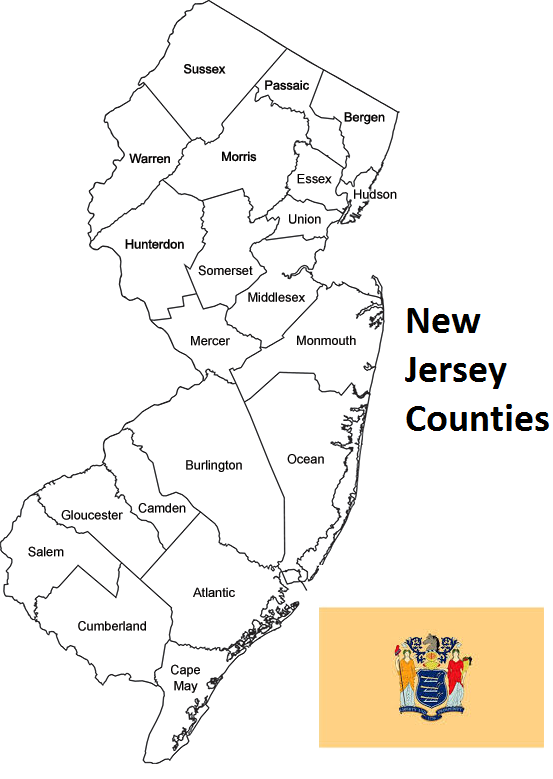List of All Counties in New Jersey
There are a total of 21 counties in the state of New Jersey. Among them, Bergen County is the oldest one (established in 1683) while Union County is the youngest (established in 1857). With population of 905,116, Bergen County is the most populated. The biggest county by land area is Burlington County (2,085 km²) and the smallest is Hudson County (122 km²). Below please see all New Jersey counties which are listed in alphabetical order.
- Atlantic County, NJ
- Bergen County, NJ
- Burlington County, NJ
- Camden County, NJ
- Cape May County, NJ
- Cumberland County, NJ
- Essex County, NJ
- Gloucester County, NJ
- Hudson County, NJ
- Hunterdon County, NJ
- Mercer County, NJ
- Middlesex County, NJ
- Monmouth County, NJ
- Morris County, NJ
- Ocean County, NJ
- Passaic County, NJ
- Salem County, NJ
- Somerset County, NJ
- Sussex County, NJ
- Union County, NJ
- Warren County, NJ
Map of New Jersey Counties














































